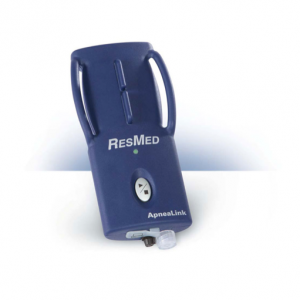Download the Apnealink Patient Information Sheet

A number of changes of sleep pattern, including obstructive sleep apnea (OSA) are recognised to occur at increased rates in patients with cardiovascular disease. The traditional way of evaluating for sleep disordered breathing or sleep apnoea is by using a polysomnograph (PSG) or sleep study. This test requires sleeping in a sleep evaluation unit overnight, and is relatively expensive and time consuming to perform and evaluate. Home testing in a more simplified manner can be done in many patients as an initial alternative. If OSA or CSA (central sleep apnea) is present it may be recommended to then be referred to a specialist sleep physician or have more comprehensive testing or both.
An Apnealink monitor may provide useful information regarding breathing, lung movements and blood oxygen levels. It also examines changes with snoring and allows responses to drugs and breathing – assisting treatments to be assessed.
You will need to allow about 15 mins plus any waiting time to be shown how to fit the Apnealink Monitor to yourself. This records oxygen in the bloodstream, any snoring sounds, chest wall movements and breathing.
Yes. You will be shown how to fit the Apnealink by one of the Concord Cardiology Staff, and given a set of instructions. You will then fit it yourself and then deliver it back to the staff the day after.
Our technical staff analyse the Apnealink recording which is then reviewed by one of our respiratory doctors. This may take 1‐2 days. Your cardiologist will arrange either a follow‐up appointment or give you the results directly after that time.